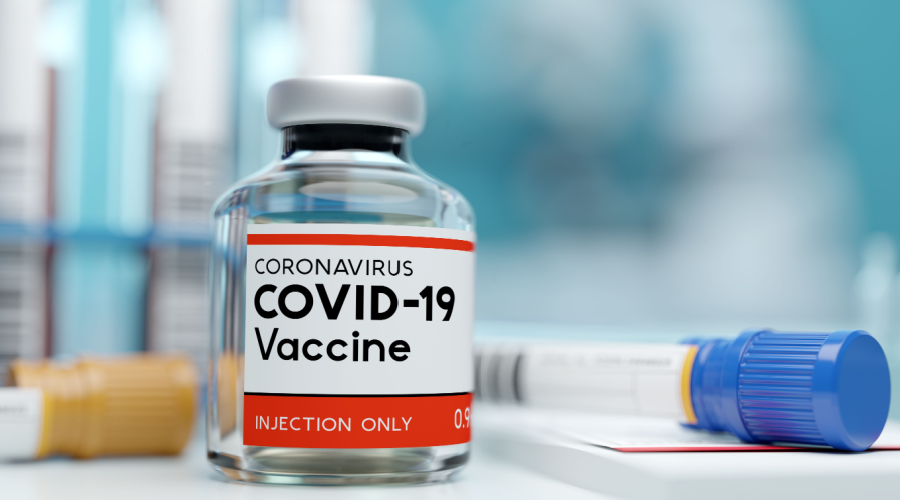Every day you use a system that’s hiding profit right under your nose. Often relegated to simply processing transactions, the pharmacy point-of-sale (POS) system houses all kinds of information about your products and your customers that can be harnessed to benefit the bottom line.
“There are multiple ways that pharmacies can use their point-of-sale system data to generate sales,” said Brad Jones, CEO of Retail Management Solutions (RMS), an industry leader in pharmacy POS technology for retail and outpatient pharmacies. “Most, unfortunately, do it the wrong way. Because they don’t ever use their data.”
Jones has been a part of the pharmacy world since he was a child. His father owned three pharmacies, and he worked with technology on the wholesaler side of the business before founding RMS 20 years ago. With this experience, he realized valuable POS data often goes to waste. Many pharmacies fail to use the data at all, and the pharmacies that do look at the data typically only use it for accounting purposes, not to drive more sales.
If pharmacies took the time to mine the data for useful insights, they’d find troves of opportunity to generate additional revenue in their front end.
Inventory control
One of those major opportunities is inventory management. POS data, such as product turnover and sales, can help ensure you stock the right amount of inventory and the right kinds of inventory.
“Probably the most common mistake that independent pharmacists make is being out of things that they should never be out of,” Jones said. “You’d be shocked at how many independent businesses are out on a regular basis of those things that represent a huge portion of their revenue.”
Pharmacies should use the 80/20 rule to figure out which products to always have stocked, Jones said. Those are the 20 percent of your products that produce 80 percent of your revenue, which you can calculate with your POS data.
Once you know which products you can’t afford to understock, set your system to alert you or to automatically reorder products when you start to get low.
On the flipside of understocking, pharmacies also lose money by letting products linger too long on the shelf. If items are slow moving or don’t sell at all, they should be replaced with ones that will, according to Jones. During a previous job, Jones would walk with owners through their store, going over inventory tracking with their POS system. He’d ask them how long a particular item had been on the shelf. “They would give me, ‘Oh, you know, we just got that in. We’ve only had that for six months.’ And I would show them the code and I would say, ‘That’s been sitting there for two and a half years, taking up space.’”
Once you pinpoint items that aren’t selling, Jones suggests a simple strategy for moving them quickly. “It’s amazing what you can do on a clearance table,” he said. “You don’t have to give it away. You just have to put it there and show some markdown and things that haven’t sold for two and a half years will fly off the shelf.”
After they’re gone, replace those products with something better. “There are millions of products out there,” Jones said. “You need to make sure that the ones you’re carrying are actually selling in your market.”
Sales trends
Your POS system can uncover specific sales trends in your front end, down to the individual items in every category, which you can use to make adjustments to improve your sales. For example, if your front-end revenue is down, the data can tell you not only which broad categories are faltering, but which specific items within those categories are the source of the problem.
One way to do this is to use the “Fine Line” structure, created by Hamacher Resource Group, which labels each product with four digits. The first two digits indicate the department, the third indicates the category, and the fourth indicates specific types of items within that category. Jones gave the example of an independent pharmacy that saw its sales plummet in its hair care department. The data revealed specifically hair color products as the culprit, which were taking up sixteen feet of space and facing stiff competition from a new Walmart down the street. Once they realized this was the issue, they reduced that section and changed their product selection.
“They vastly improved that department,” Jones said. “That’s using your data to go ‘I’ve got to make a change.’”
Another way to use sales trends to improve front-end revenue is to perform a basket analysis to discover surprising connections among products. “When you do a net basket analysis, you’ll find that there are things that you didn’t realize go together,” Jones said. With that information, you can start to cross-merchandise to boost add-on sales and impulse buys, making the shopping experience easier on your patients.
Customer data
Data from your loyalty rewards program can provide precious insight on your customers that you can use to drive more sales. “Independents have an opportunity to take their customer purchase history and do some special things,” Jones said.
The most common use of customer purchase history is target marketing, which tailors communications to each patient’s particular buying habits and preferences. Although it’s an effective use of POS data, Jones said making personal connections is more important for community pharmacies.
He suggests using POS data to find out who your most frequent shoppers are and give them extra special attention. Personal connection is what brings many people to independent pharmacies, he said, so emphasizing and improving that connection with your top shoppers can help keep them happy and loyal.
Another successful strategy Jones has seen from other pharmacies is offering to match customers’ rewards points with donations to a local organization. For example, for every reward point a patient earns, the pharmacy donates a specific amount to the local elementary school. This approach boosted front-end sales for one small-town pharmacy, which heavily marketed its weeklong match offer.
“It’s not something you can do every week, but it’s certainly something that you can do,” Jones said. “Be creative with ideas and things you can do with loyalty data and loyalty information. I think most don’t even look at that.”
Take it slow
Don’t wait to start using your POS data, but don’t try to do everything at once. Jones said it’s common for pharmacy owners to get excited about the opportunities and burn themselves out by trying to do too much.
“We try to teach our customers and tell them, start small,” he said. “Don’t try to look at it all, just pick one thing. And if you don’t know how to get to it, then ask your POS provider, ‘How do I do this?’ and just take it one small step at a time.”
From the Magazine
This article was published in our quarterly print magazine, which covers relevant topics in greater depth featuring leading experts in the industry. Subscribe to receive the quarterly print issue in your mailbox. All registered independent pharmacies in the U.S. are eligible to receive a free subscription.
Read more articles from the March issue:
- How to maximize rebates and profitability on pharmacy inventory
- These are the top front-end items to get on your pharmacy selves
- The essential guide to retail pharmacy layouts
- How to get five-star reviews online and why you can’t afford anything less
- This independent pharmacy owner is standing up to PBMs
- How safe is your pharmacy from a robbery?
- Is technology the solution to non-adherence?
An Independently Owned Organization Serving Independent Pharmacies
PBA Health is dedicated to helping independent pharmacies reach their full potential on the buy side of their business. The company is an independently owned pharmacy services organization based in Kansas City, Mo., that serves independent pharmacies with group purchasing services, expert contract negotiations, distribution services, and more.
PBA Health, an HDA member, operates its own VAWD-certified warehouse with more than 6,000 SKUs, including brands, generics, narcotics CII-CV, cold-storage products, and over-the-counter (OTC) products.
Want more pharmacy business tips and advice? Sign up for our e-newsletter.











